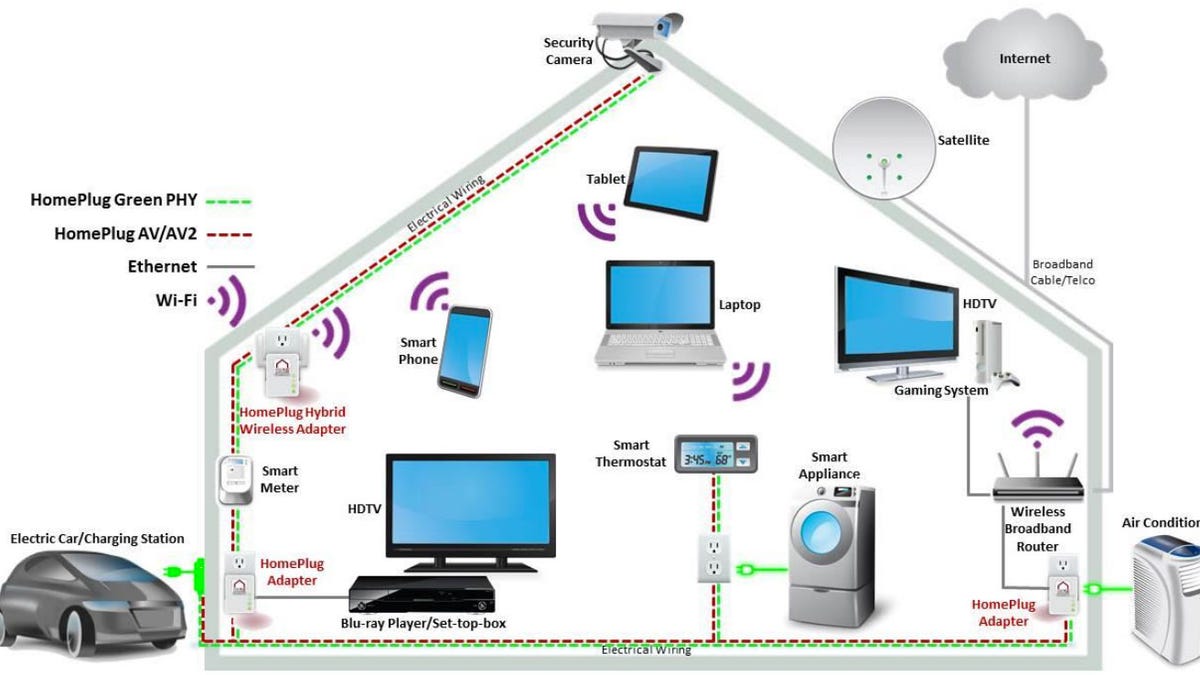Qualcomm adds new high-tech luster to lowly electrical wires
A new chip lets HomePlug devices get more use out of homes' electrical wiring for high-speed networking, boosting the minimum speed to about 60Mbps and the maximum to 1Gbps.

AMSTERDAM -- Electrical wires hardly have the glamor of 4G mobile networks or invisibly small microchip transistors. But Qualcomm hopes a faster new version of technology called HomePlug will breathe new high-tech life into homes' old wiring.
Qualcomm's Atheros division makes processors that let devices such as set-top boxes and wireless network range extenders communicate over power lines using HomePlug. A new chip, the QCA7500 announced here this week at the Broadband World Forum, can take advantage of a HomePlug AV2 feature called MIMO (multiple-input and multiple-output) to boost data-transfer speeds up to 1 gigabit per second.
The HomePlug AV2 standard, which arrived last year, boosted speeds by broadening the signal spectrum to a range of 30MHz to 86MHz. The MIMO upgrade to AV2 increases speeds more by taking advantage of the third prong on most power plugs. Without MIMO, only two prongs are used, which means a single pair of electrical lines, but with MIMO, there are three pairs of wires that can carry signals.
First-gen HomePlug technology arrived on the market more than six years ago with speeds reaching only 200Mbps, then three years ago got a boost to 500Mbps, said Todd Antes, vice president of marketing for Qualcomm Atheros's networking business unit. But the key aspect of the new technology is not so much the peak speeds available at plugs with a strong link, but instead a speed boost for the plugs that have the feebler connections. That means people can install data-hogging devices like DVRs and TVs in whatever room they want, according to Antes.
HomePlug's existing limit of about 30Mbps at the worst plug is no longer acceptable with the arrival of high-resolution 4K video, Antes said.
"We're starting to see 50Mbps or 75Mbps starting to be the new requirement for every plug," Antes said. "With MIMO's additional bandwidth, we think AV2 shows we'll be able to get to 60, 70, or 80Mbps minimum. At your best plug in the home, you'll see hundreds of megabits. We think it's a great backbone technology."
HomePlug has caught on in Europe, where Wi-Fi signals are less likely to be able to penetrate homes' older, heavier-duty construction materials. Some Internet service providers, such as Free in France, don't even give customers a choice: the home router gets its power from a HomePlug-enabled power cord that also sends data to a HomePlug-enabled set-top box.
Antes thinks HomePlug could catch on better in the United States, too, for example with range extenders to help people bring Wi-Fi coverage to rooms that the main wireless access point can't reach.
HomePlug also could be useful for people buying electric vehicles. When owners get home, they can plug the car in and it can sync music playlists, coordinate charging, or otherwise use the home network.
Updated at 1:37 p.m. PT to correct the frequency range of HomePlug AV2. The range is 30MHz to 86MHz.

